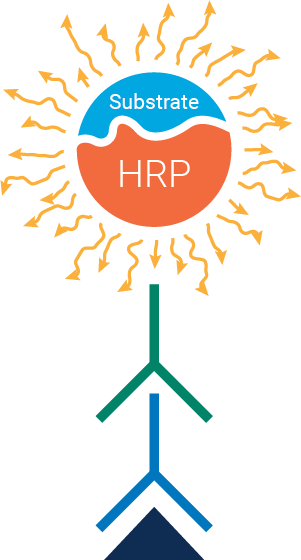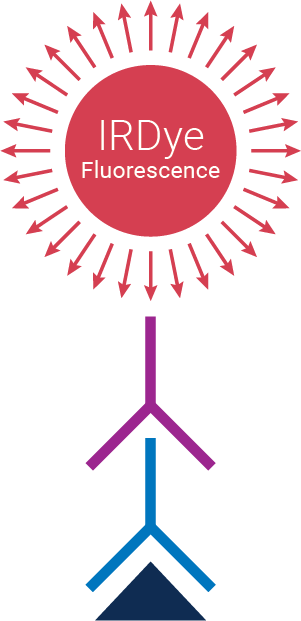Using Chemistry to Get Proportional Signals
Why Confirm that Signals Are Proportional?
Because expensive antibodies are wasted every day.
Seem dramatic? Well, “Western blot” and “quick ‘n’ easy protein assay” aren’t exactly synonymous.
The accuracy, integrity, and replicability of your blot depends on the details of detection chemistry that you choose. For accurate quantitation, signals need to be proportional to the amount of protein loaded. That means if you double the amount of target protein, the signal should be twice as large as well.
Don’t just assume that your signals are proportional – you must prove it to your boss, reviewers, and colleagues with solid evidence. One thing that affects signal proportionality is your choice of detection chemistry. The two most common Western blotting methods are chemiluminescence detection and fluorescence detection.
“The analysis revealed how seemingly minor variations affect immunoblot linearity and reproducibility, yielding pseudoquantiative numbers that are not directly proportional to the input material.”
ECL Detection

Enhanced chemiluminescence (ECL) is an indirect detection method that uses HRP-labeled secondary antibodies. Horseradish peroxidase (HRP) is an enzyme that reacts with substrate to generate photons of light. Light is the signal that the film or digital imager detects.
Be aware of enzyme and substrate dynamics and timing issues. With ECL, the answer you get depends on when you ask. Timing matters.
Because the kinetics of the enzymatic reaction affect signal intensity, signals don’t always accurately reflect target abundance. The proportionality between different target signals is constantly changing.
“Chemiluminescence detection is highly sensitive… However, the enzymatic reaction is dynamic and changes over time making it necessary to optimize reaction times and imaging.”
Fluorescence Detection

Fluorescence detection is the easiest way to get proportional signals. Direct detection is performed using secondary antibodies labeled with IRDye near-infrared (NIR) fluorescent dyes. These NIR fluorescent signals are stable for months – no enzymes or substrates are used.
The intensity of fluorescent signals is unaffected by exposure times, making fluorescence more consistent and reliable for quantitative results. The long-lasting signals from fluorescent dyes remove one variable from the experimental equation.
“The signal to sample ratio is linear over a broad range of protein concentrations with infrared dye-labeled secondary antibodies.”
With ECL, timing mattersFluorescence is stable for months
Validating Antibodies
Accuracy in Western blot detection chemistry depends on many things, including proper antibody validation. So, don’t waste valuable antibodies. Confirm that your antibody recognizes the correct protein target before you begin your experiment. Empiria Studio™ Software helps you confirm your primary antibody is specific and selective to your target by quickly walking you through antibody validation. To verify antibody specificity and to identify possible interference from background bands, perform single-color control blots.
“…a detailed characterization that demonstrates not only the specificity of the antibody, but also the range of reactivity of the reagent in the assay, should be published.”
What steps can you take today to improve your Western blot results?
LI-COR provides products, protocols, and support for Western blotting (and a range of other assays) that help reduce variability and increase replicability. Let us know how we can help you.
Get in TouchReferences
- Janes KA. (2015) An analysis of critical factors for quantitative immunoblotting. Sci Signal. 8(371): rs2.
- Mathews ST, Plaisance EP, Kim T. (2009) Methods Mol Biol. 536:499-513. DOI: 10.1007/978-1-59745-542-8_51.
- Bond D, Primrose DA, Foley E. (2008) Quantitative Evaluation of Signaling Events in Drosophila S2 Cells. Biol Proced Online. 10:20-28.
- Image Integrity. Nature. Macmillan Publishers Limited, 2016. Web. 3 March 2016.
